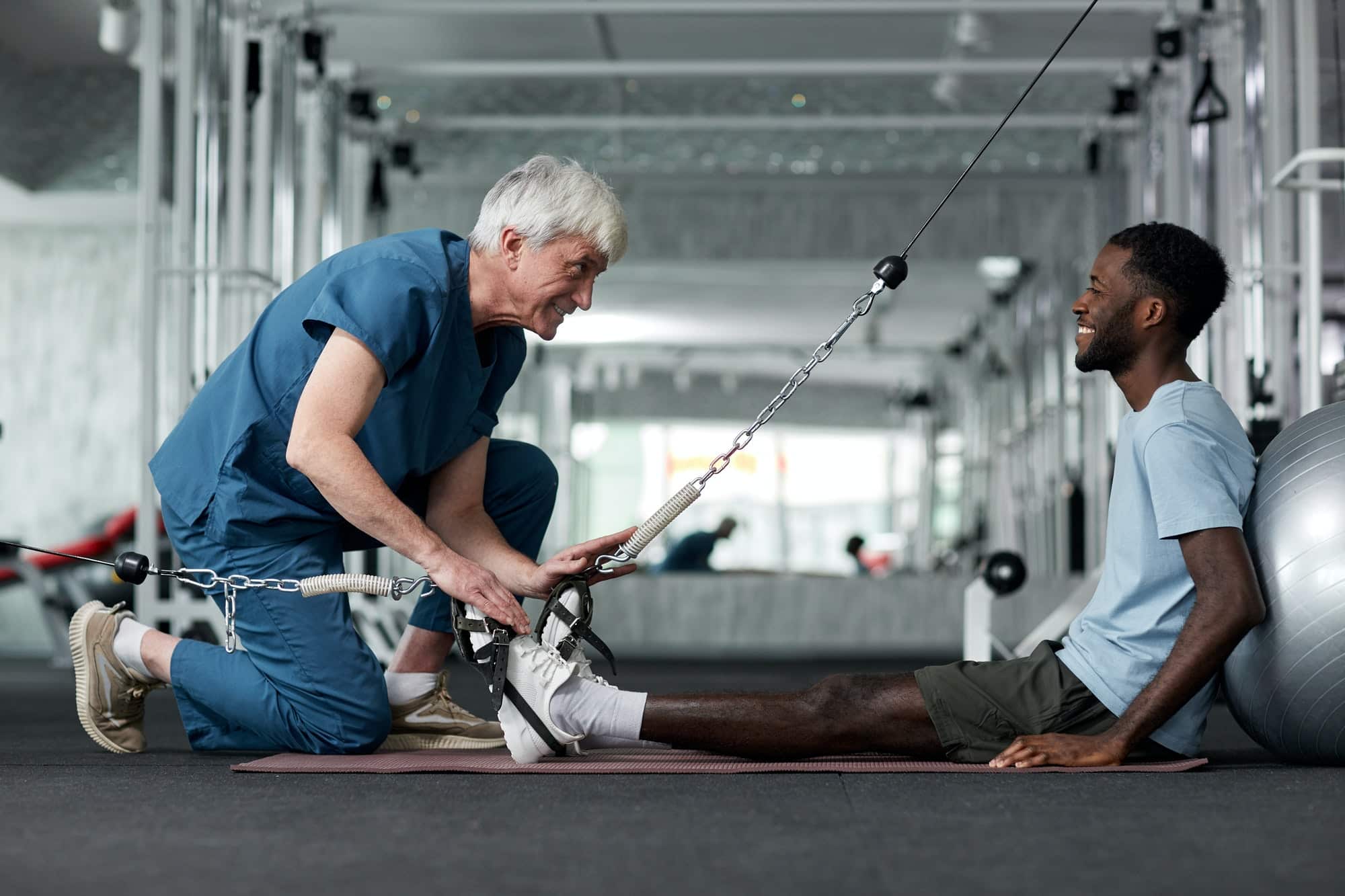The world of sports medicine has always been a race against time, with therapists and athletes alike striving for the quickest, most effective ways to heal from injuries and get back on the field. In recent times, one tool has garnered particular attention as a breakthrough in the field of physical therapy: the anti-gravity treadmill. Developed by NASA and popularized by Google, this innovative machine has shown promising results in the rehabilitation of injured athletes, particularly those with ankle injuries.
The Fundamentals of Anti-Gravity Treadmills
Before diving into the nuts and bolts of how anti-gravity treadmills work, let’s take a brief look at the basics. These state-of-the-art machines use technology conceived by NASA to emulate a condition of reduced gravity. By allowing athletes to run with less impact, they can start training and rehabilitating earlier, and therefore recover faster.
Sujet a lire : How to apply biomechanics for improving serve speed in badminton?
The anti-gravity treadmill utilizes a pressurized air chamber to counteract gravitational pull, effectively reducing the user’s weight by up to 80%. This means that for a 200-pound athlete, it would feel like they are weighing only 40 pounds while running on this treadmill.
Anti-Gravity Treadmills and Ankle Injuries
Ankle injuries are common among football players due to the high-intensity, stop-and-start nature of the sport. These injuries range from minor sprains to severe fractures, all of which require adequate rest and rehabilitation to heal properly. Yet, the prolonged downtime can be detrimental to a player’s performance, conditioning, and mental well-being.
Lire également : What role does virtual reality play in improving goalkeeping skills in soccer?
The use of anti-gravity treadmills in the rehabilitation of ankle injuries has been a game-changer. According to a study published on PubMed, athletes rehabilitating from ankle injuries using these treadmills reported less pain during exercise, and their muscles showed better recovery rates. The athletes were able to maintain their cardiovascular fitness without overtaxing their injured ankles, thereby facilitating faster recovery.
Training with Anti-Gravity Treadmills
Training with these treadmills is not just about running in a bubble. Their advanced technology includes features like real-time gait analysis and biofeedback, which help therapists monitor and correct the athlete’s form and technique during running. This can prevent future injuries and improve running efficiency.
Moreover, as athletes can adjust the gravity level on these machines, they can gradually increase their body weight load during the rehabilitation process, mirroring the natural healing and strengthening process. This ensures that the transition back to normal running is gradual and safe, reducing the risk of re-injury.
Research and Evidence Supporting Anti-Gravity Treadmill Therapy
A plethora of studies and scholarly articles have supported the effectiveness of anti-gravity treadmills in sports injury rehabilitation. According to a review on Crossref, these treadmills enhance recovery from surgery due to their ability to allow early weight-bearing exercises without putting undue stress on the healing tissue.
Besides, research has shown that these treadmills can even be used pre-surgery in cases of severe injuries, to maintain fitness levels and minimize muscle loss during the inactive period.
Conclusion: The Future of Sports Rehabilitation
The promising results shown by anti-gravity treadmills in the rehabilitation of ankle injuries among football players have sparked optimism for the future of sports rehabilitation. Physical therapy has come a long way since the days of simple stretches and ice packs, and with the advent of technology such as the anti-gravity treadmill, it continues to evolve, offering new hope to athletes in their journey towards recovery and peak performance.
The use of these treadmills isn’t limited to professional athletes. They’re also becoming increasingly popular in general fitness and rehabilitation centers, offering the benefits of lower-impact exercise to people of all fitness levels. As research continues, and with further technological advancements on the horizon, who knows what the future holds for the world of sports rehabilitation?
The Role of Anti-Gravity Treadmill in Injury Prevention
Injury prevention is a crucial aspect of sports medicine. With the use of anti-gravity treadmills, therapists can not only aid recovery, but also work towards reducing the risk of future injuries. The real-time gait analysis feature of these treadmills allows immediate correction of any improper running form or technique, thus promoting safer training habits.
A study on Google Scholar shows that these treadmills can lower the impact on joints by up to 40% compared to regular treadmills, thereby reducing the risk of stress-related injuries. They also allow for single leg exercises that can strengthen weak muscles and improve balance, further enhancing injury prevention.
Moreover, the ability to adjust the body weight load on these treadmills can help athletes gradually build up strength and endurance in a safe, measured manner. This control over the weight-bearing aspect of running ensures that athletes do not push their bodies beyond their current capabilities, thereby minimizing the chances of overuse injuries.
The Impact of Anti-Gravity Treadmill on Rehabilitation Protocol
The incorporation of anti-gravity treadmills into the rehabilitation protocol has revolutionized the field of sports medicine. A free article on PubMed highlighted the significant increase in return-to-sport rates among athletes rehabilitating from anterior cruciate ligament (ACL) injuries using these treadmills. The athletes were able to maintain their cardiovascular fitness without straining their healing ligaments, thereby speeding up their overall recovery time.
Furthermore, according to a Med Doi study, physical therapy using an anti-gravity treadmill in the early stages of rehabilitation following surgery can improve outcomes. The results indicated that the participants who used the treadmill had greater range of motion, reduced swelling, and faster recovery compared with the group that did not use the treadmill.
Interestingly, these treadmills are also associated with positive psychological effects. As noted in a PMC free study, athletes reported feeling less anxious about their injury and more confident in their ability to return to sports when they were able to exercise sooner and without pain.
Conclusion: The Future Is Bright with Anti-Gravity Treadmill
The influence of anti-gravity treadmills in sports rehabilitation cannot be overstated. These innovative machines offer a promising solution to a longstanding challenge in sports med – how to expedite recovery from injuries without exacerbating them. From maintaining fitness levels during injury downtime to enabling safer, more effective rehabilitation protocols, these treadmills have opened up new possibilities for athletes.
Moreover, as these treadmills become more accessible to the public, their benefits are not just restricted to the sports community. Those recovering from surgeries, seniors looking for a low-impact exercise option, and people wanting to lose weight can all take advantage of this technology.
Given the current trajectory of technological advancements in sports medicine, and the growing body of evidence supporting the use of anti-gravity treadmills in rehabilitation, it is clear that these machines are here to stay. As more research gets published and more progress is made, the future of sports rehabilitation, aided by anti-gravity treadmills, looks brighter than ever.






